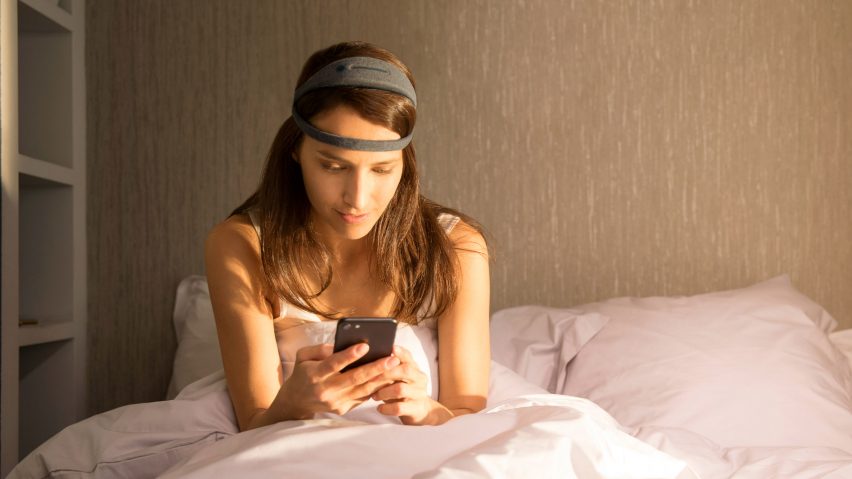For his project with Silicon Valley start-up Rythm, industrial designer Yves Behar had to make a computer comfortable enough for restless sleepers to wear on their heads overnight.
The device, called Dreem, is designed to help people with chronic sleeping problems. It's said to work by monitoring a person's brain activity and emitting sounds that will prolong their periods of deep sleep.
The sounds are relayed via bone conduction – which means the device should be inaudible to any sleeping companions in the bed with the wearer.
As well as the bone-conducting speakers, Dreem incorporates a number of sensors, a CPU (central processing unit) and a few basic controls. All of these had to be incorporated into the headband-like device while keeping it unobtrusive enough to be worn overnight by already light sleepers.
To meet this challenge, Behar and his studio, Fuseproject, looked to "loungewear instead of tech", incorporating fabric, foam inserts, soft elastic and muted colours.
"The ultimate goal was something comfortable that you can sleep with," Behar told Dezeen. "The largest portion of the technology – the boards and processors – is on the top of the head, and then the sensors are integrated into a very thin fabric band."
"The result is a comfortable piece of technology that you should be able to sleep in and use all night, every night."
At the same time, the sensors – dry polymer electroencephalography (EEG) electrodes – required highly specific placement on inconvenient areas of the head.
"It's pretty complex stuff to do on your head while you're sleeping," Behar continued. "A number of pieces of technology have to reside in the apparatus and be in contact with the frontal lobe and the back of your head."
Ryhtm was founded three years ago with the mission to make sophisticated neurotechnology usable in the home. It put a lot of focus into nailing the science behind Dreem, which is supported by several studies.
While launching Dreem late last week, Rythm announced it had secured $22 million (£17 million) in investment.
"Rythm started with one single idea – to monitor and influence brain activity based on auditory stimulation to enhance sleep quality," said Rythm CEO and co-founder Hugo Mercier.
"After our successful beta program, we have validated the science and learned from more than 500 users on what the headband can do. The launch of Dreem is a breakthrough moment."
In addition to the sounds it produces during deep sleep, Dreem can play white noise to help the user fall asleep in the first place, and other audio to wake them in the morning.
It also syncs with an app to provide users with a breakdown of their sleeping patterns. It avoids Bluetooth or Wi-Fi while it is being worn, instead syncing with the user's phone after they wake up and remove the gear.
Acknowledging the device's proximity to such a sensitive area of the human body, Rythm has a manifesto geared towards protecting user privacy and safety.
The manifesto pledges to respect the users' rights to cognitive liberty (no hidden features slipped in via the backdoor), mental integrity (no subliminal programming) and data privacy (no on-selling of data, which is strictly pseudonymised).
Behar – who made it onto Dezeen Hot List in 2016 – is known for his industrial design for a new generation of smart products.
In the last week he has also launched a second connected product – the Live OS smart office furniture system, conceived together with Herman Miller, which helps keep sedentary office workers more active.

